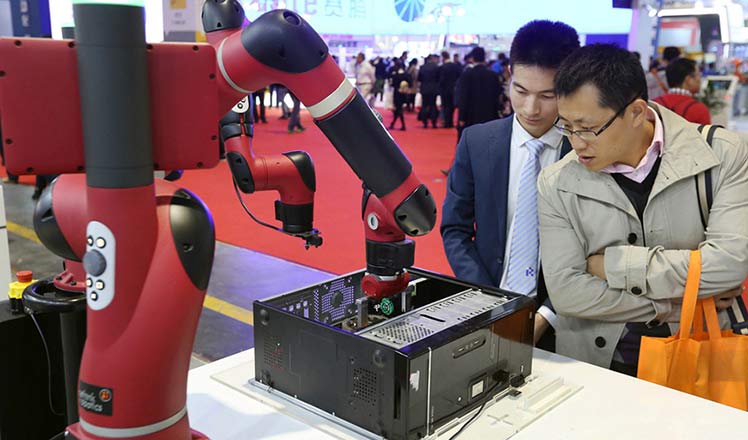China to build Antarctic astronomical observatory
Updated: 2016-11-03 09:32
(Xinhua)
|
||||||||
NANJING, Nov. 2 -- China is near to building a South Pole Astronomical Observatory, according to four astronomers onboard the Chinese scientific icebreaker Xuelong (or Snow Dragon), which left the port of Shanghai Wednesday for China's 33th Antarctic Expedition.
One of the astronomers on the trip is hoping that being far from home really does make the heart grow fonder. "I am going to propose to my girlfriend from the South Pole," said Lu Haiping, 32, before he set off.
He and his colleagues have embarked on a five-and-a-half-month trip to the South Pole, though it is not love they are interested in but the stars.
The team includes an astronomer from the National Astronomical Observatories and three from the Nanjing Institute of Astronomical Optics and Technology.
China has sent astronomers to the region every year since 2007 to make preparations to build an astronomical observatory on Dome-A, the highest location in Antarctica, about 4,093 meters above sea level.
The Chinese Antarctic Expedition first visited Dome-A in 2005, which is considered one of the best places on earth to set up an observatory as it stores climate information and atmospheric conditions for the entire globe.
China built its first Antarctic expedition station -- Kunlun Station -- in 2009, about 7.3 km from Dome-A.
It was in this station that preparations for building the Dome-A observatory were carried out.
"On each Antarctic expedition, members have just 20 days to work at the Kunlun Station," Lu said, adding that he and his colleagues have been commissioned to finish 100 projects during the new expedition.
China has established an automated astronomical observation platform at Dome-A, and plans to build a high-elevation Antarctic Terahertz telescope, the world's newest far-infrared observatory.
Lu's primary work on the trip is to maintain the automatic telescope AST3-2 unit, and to dismantle old facilities.
In their South Pole astronomical research, China's astronomers have cooperated with astronomers from the United States, Russiaand Germany, such as in the observation of high-energy electrons based on data obtained from various Antarctic observatory facilities.
The astronomical research is expected to shine a light on the origin of cosmic objects, dark matter and extraterrestrial life.
- France to begin moving migrant minors from Calais
- China-Japan ties growing but unstable: Premier
- Analysts to watch Alibaba's cloud computing, mobile results
- UN Security Council hails election of new president in Lebanon
- Regular China-South Asia freight train launched
- Police swoop on Paris migrant camp after Calais Jungle clearout

 China's top 10 post-80s self-made billionaires
China's top 10 post-80s self-made billionaires
 Famous paintings recreated with chocolate
Famous paintings recreated with chocolate
 Looking for a ride?
Looking for a ride?
 Robots draw people to China International Industry Fair
Robots draw people to China International Industry Fair
 German international Miroslav Klose retires
German international Miroslav Klose retires
 Top 10 most influential Japanese cartoons in China
Top 10 most influential Japanese cartoons in China
 Opera performer who takes her shows to villages
Opera performer who takes her shows to villages
 13 most appealing cars in China in 2016
13 most appealing cars in China in 2016
Most Viewed
Editor's Picks

|

|

|

|

|

|
Today's Top News
US election rhetoric unlikely to foreshadow future US-China relations
'Zero Hunger Run' held in Rome
Trump outlines anti-terror plan, proposing extreme vetting for immigrants
Phelps puts spotlight on cupping
US launches airstrikes against IS targets in Libya's Sirte
Ministry slams US-Korean THAAD deployment
Two police officers shot at protest in Dallas
Abe's blame game reveals his policies failing to get results
US Weekly

|

|







